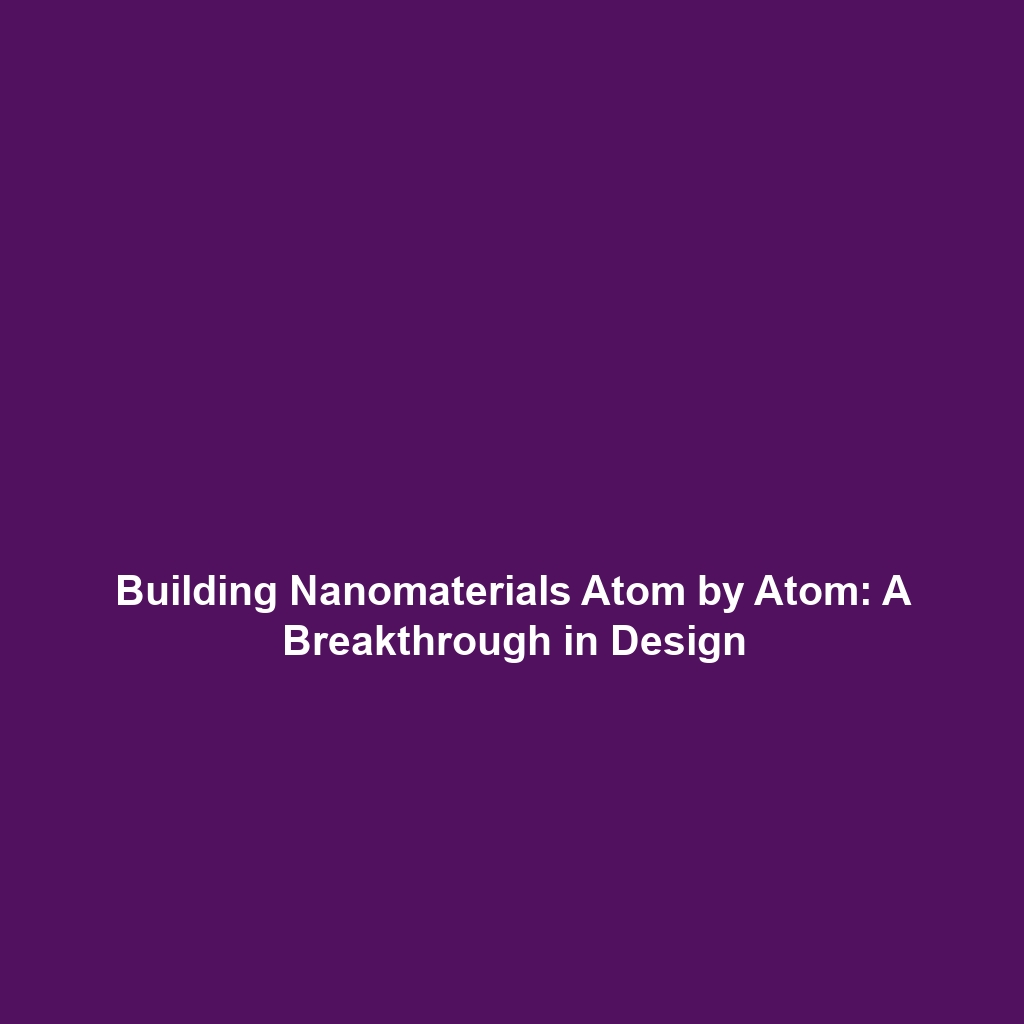Materials and Engineering: Catalysts for Fusion Energy Innovation
Materials and Engineering play a critical role in advancing the field of Fusion Energy. As the world increasingly turns to sustainable and renewable energy solutions, understanding the materials’ properties and engineering techniques that can withstand extreme conditions is paramount. This article will explore the significance of Materials and Engineering in Fusion Energy, including key concepts, applications, challenges, and future innovations.
Key Concepts in Materials and Engineering
Materials and Engineering involves the study and application of materials’ properties and the processes used to design and manufacture components. In the realm of Fusion Energy, several key concepts emerge:
- Material Selection: Identifying materials capable of withstanding high temperatures and radiation levels.
- Thermal Properties: Examining how materials conduct heat, crucial for maintaining reactor temperatures.
- Mechanical Stress: Understanding how materials will respond to the immense pressures found in fusion reactors.
These principles are vital in designing fusion reactors that aim to replicate the processes of the sun, ultimately providing a clean and virtually limitless energy source.
Applications and Real-World Uses
The applications of Materials and Engineering within Fusion Energy are numerous and impactful. For instance:
- Construction of Reactor Components: Advanced materials like tungsten and carbon composites are currently being used in reactor walls to handle extreme conditions.
- Heat Exchangers: Innovative engineering is applied to develop efficient systems for transferring heat from fusion plasma to a working fluid.
- Diagnostic Tools: Engineered materials contribute to the creation of sensors and diagnostic tools necessary for monitoring reactor performance.
Current Challenges
Despite the promising potential, several challenges persist in the study of Materials and Engineering within Fusion Energy:
- Material Degradation: Over time, materials can degrade under intense neutron bombardment and high temperatures.
- Cost of Research and Development: The financial investment required for advanced materials research is substantial.
- Fabrication Techniques: Developing efficient and scalable fabrication techniques for complex geometries remains a hurdle.
Future Research and Innovations
The future of Materials and Engineering in the field of Fusion Energy looks promising, with numerous ongoing research initiatives promising breakthroughs. Upcoming innovations include:
- Nanostructured Materials: Research into nanoscale materials that improve resilience and efficiency in extreme environments.
- Self-Healing Materials: Engineers are exploring materials that can repair themselves after sustaining damage.
- Advanced Computational Modeling: Innovative simulations may lead to discovering new materials with enhanced performance metrics.
Conclusion
As we have explored, Materials and Engineering are fundamental in advancing Fusion Energy applications. Addressing current challenges and fostering future innovations will significantly influence the successful implementation of fusion technology. For those interested in learning more about related topics in Sustainable Energy and Advanced Materials, consider exploring our other articles here.



